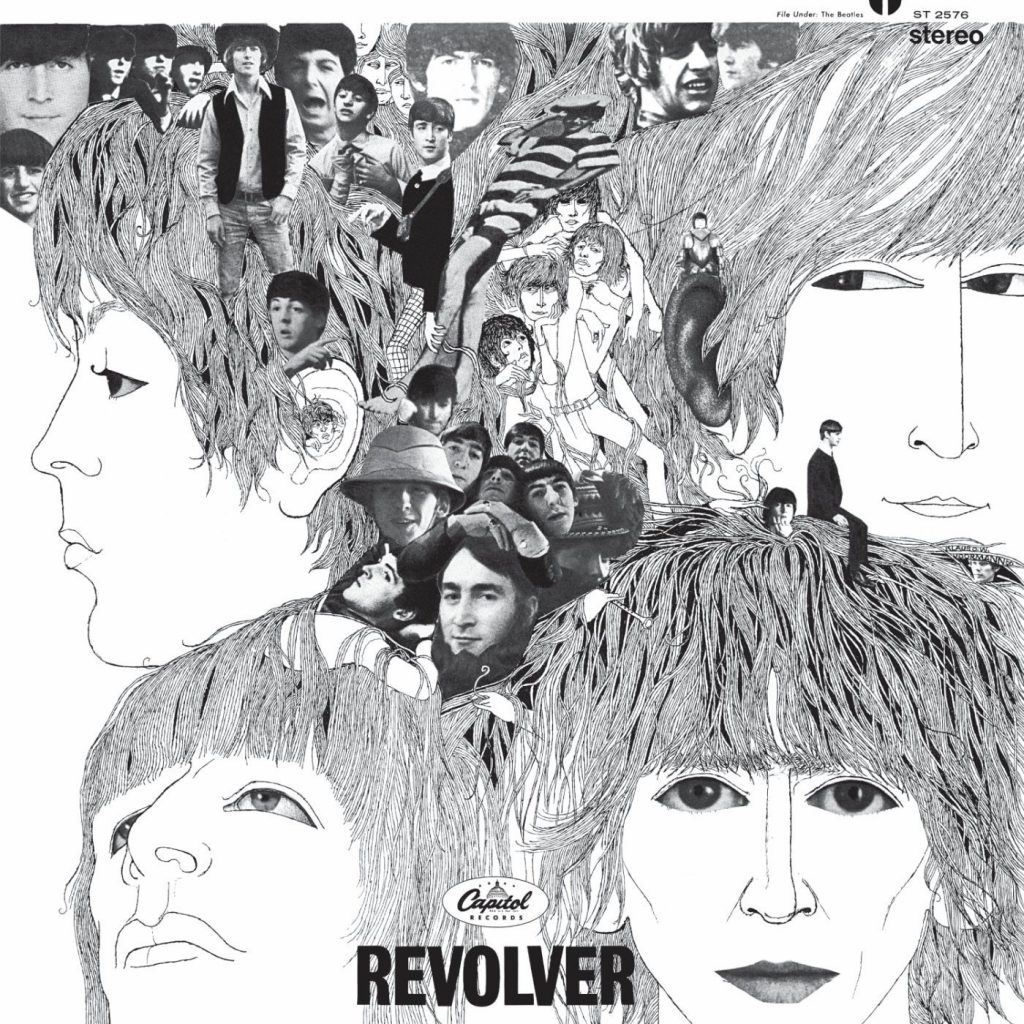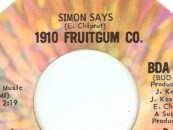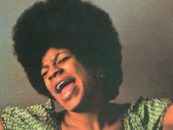Beatles Different ‘Revolver’ Releases: The Last Time
by Best Classic Bands Staff Most American Beatles fans who picked up a copy of Revolver had no idea that they were receiving a somewhat different record than that of their peers in the U.K. When it was released in England on August 5, 1966, three days earlier than in the U.S., the track listing on the British version looked like this:
Most American Beatles fans who picked up a copy of Revolver had no idea that they were receiving a somewhat different record than that of their peers in the U.K. When it was released in England on August 5, 1966, three days earlier than in the U.S., the track listing on the British version looked like this:
Side one
1. “Taxman”
2. “Eleanor Rigby”
3. “I’m Only Sleeping”
4. “Love You To”
5. “Here, There and Everywhere”
6. “Yellow Submarine”
7. “She Said She Said”
Side two
1. “Good Day Sunshine”
2. “And Your Bird Can Sing”
3. “For No One”
4. “Dr. Robert”
5. “I Want to Tell You”
6. “Got to Get You into My Life”
7. “Tomorrow Never Knows”
Three of those songs—“I’m Only Sleeping,” “And Your Bird Can Sing” and “Dr. Robert”—were excised from the American Revolver on Capitol Records because they’d already been released here and in Canada in June, on Yesterday and Today, a tossed-together compilation of recent singles and other stray tracks.
Unknown at the time to most American Beatle people, Capitol and its parent company in the U.K., EMI, had been releasing different Beatles albums, or at least reshuffling song orders on the group’s albums in the two countries, since the Beatles’ arrival two years ago. (Capitol also routinely released shortened versions in the States, lopping off two or three tracks). The George Martin-produced Revolver, like Rubber Soul several months earlier, was no different. Thus, in America, fans knew Revolver, which sported the same Grammy Award-winning Klaus Voormann-drawn black-and-white cover worldwide, as an 11-track LP with this running order:
Side one
1. “Taxman”
2. “Eleanor Rigby”
3. “Love You To”
4. “Here, There and Everywhere”
5. “Yellow Submarine”
6. “She Said She Said”
Side two
1. “Good Day Sunshine”
2. “For No One”
3. “I Want to Tell You” (Harrison)
4. “Got to Get You into My Life”
5. “Tomorrow Never Knows”
If any fans in the U.S. felt short-changed though, they were in the minority. The album hit #1 on the sales chart for six weeks but yielded just two singles. “Yellow Submarine” and “Eleanor Rigby” were released as the A-side and B-side of the same 45; the former “only” reached #2, while the latter peaked at #11.
“Got to Get You into My Life” wasn’t released as a U.S. single until 1976 when it was used to promote the compilation album Rock ‘n’ Roll Music. (The song reached #7 on the chart a full six years after the group had broken up.)
Although Revolver was actually only the seventh official Beatles studio release, since the onslaught had begun, Americans had been deluged with Beatles albums never issued overseas. It was, for a while, hard to keep up with them all: Meet the Beatles, The Beatles’ Second Album, Something New, Beatles ’65, The Early Beatles and Beatles VI, as well as several other titles (some on different labels such as Vee-Jay), had been rush-released by Capitol to catch up with the Brits and/or cash in on the phenomenon. And we gladly bought them all. For Americans, those albums, alien to British teens, were part of the Beatles’ story. (Not to be confused with The Beatles’ Story, yet another American album, released by Capitol in late 1964 and featuring mostly interviews and press conference snippets.)
If you’re a new Best Classic Bands reader, we’d be grateful if you would Like our Facebook page and/or bookmark our Home page.
Meanwhile, British releases such as Please Please Me and With the Beatles were unknown in the United States, but that’s another story for another time. It wasn’t until the 1967 release of Sgt. Pepper’s Lonely Hearts Club Band that the Beatles were able to insist that the same album be released worldwide, and by that point they had only a few years left before their split.
In any case, if there was one thing that was universal about Revolver it was the instant acclaim the album enjoyed—regardless of the configuration spinning on the turntable. To this day, it remains on the “Best Albums Ever Recorded” shortlist, and will likely remain there as long as human beings listen to music.
Related: Our review of the album’s lavish 2022 edition
The various releases of the album’s 2022 edition are available in the U.S. here and in the U.K. here.
Voormann, born April 29, 1938, went on to win the Grammy Award for Best Cover—Graphic Arts on March 2, 1967, the first time for a rock and pop album.
In addition to Revolver, Voormann designed album sleeves for other artists, including the Bee Gees, Ringo Starr and Sonny Rollins, and has played on many of the Beatles’ solo projects. He took part in the Concert for Bangladesh, was a member of the Manfred Mann band and was a founding member of Yoko Ono and John Lennon’s Plastic Ono Band, as well as contributing to numerous recordings, including some by Randy Newman, Lou Reed, Ravi Shankar and Carly Simon.
- Emerson, Lake & Palmer ‘Welcome Back My Friends’ is Latest in Fan Memories Book Series - 12/25/2025
- That Haunting Female Vocal On ‘Gimme Shelter’ - 12/25/2025
- Musician Deaths of 2025 - 12/24/2025






21 Comments so far
Jump into a conversationcould sware I had a version of this album from the US that contained the song, :Nowhere Man.
“Nowhere Man” appeared on “Yesterday and Today'” in America (the one which the Beatles wanted to adorn with the famous “butcher cover”).
When I heard She Said, She Said for the first time, I replayed it a dozen times easily. I thought that this was something totally different and I was along for the trip.
Look up the cover of the song ‘ She Said She Said’ by the band Lonestar, very interesting version and really rocked up
Revolver came along when I was a confused, somewhat isolated young boy. It somehow gave me strength in its audacious perfection, even though it was the U.S. version. John’s two songs in particular took me to a new, better place in my life, though how I could never explain.
What are you talking about? The vast majority of US Beatles fans were aware that there were differences between the U.K. Parlophone releases and the US Capitol records. This was common knowledge at the time. Your comments are unnecessarily hysterical and inaccurate.
Oh Stuart, quit being so hysterical and inaccurate….obviously this was targeted to those not aware of the International differences in the albums, so go ahead and pat yourself on the back for already knowing this info and stop criticizing those who inform those who don’t!
Ditto to Alan’s comment=just sit back & enjoy
the music, but don’t forget your face mask….
Maybe to the older in the know folks it was apparent. To us early teen and pre teen fans who bought their records at a local department or drug store back in the day, it was not.
Well, at the time, I wasn’t aware of any differences between the British and American versions.
no most of us were 11 and 12 years old and had no way of knowing what was in the UK until we were older .There was no social media and we didnt read british newspapers.The dj’s on the radio did not play the UK albums
You tell him Steve!
Good information which detailed the differences between the US and UK albums. My question: Was it just greed that caused them to be different? Even if some songs had been previously released, it would have been nice to include them on the album – sort of a freebie.
Don’t forget the Colombian version, which is the same as the UK version, except missing Yellow Submarine.
GREAT MEMORIES of Concert Days. The First U.S. TOUR For the Beatles was Performed at the Cow Palace in San Francisco in 1964. I gave my Ticket to a Friend. Then on August 25, 1966.. I saw the Beatles at Seattle Center Coliseum where the Space Needle is located and flew back Home to San Francisco to see the 2nd Show at Candlestick Park on August 29, 1966. Glad I got to See them 2x in 1966 being that was their Last Year TOURING.. Those were the HAPPY DAYS!!!
Other countries did the same. Not all UK albums were world wide and in some cases if they were released they had different covers. Back then (’66) at 11 yrs old you may had read about a UK version , but you definitely see import albums in small towns or at department stores that had a ” records ” department. At the time this album came out , the Lennon religious remark was in the news , and I thought at the time , wrongly now I know , that John only had 2 songs because of his remark. But now we all know it was about costs & copyrights , etc. , that determined the number of songs per album. The Beatles were not alone in this as almost every UK band had different covers , titles & songs in the different countries. It made it unique and fun to collect as I got older. One interesting fact people skip by , are the singles released around the world , songs that were hits in some countries , but only album cuts in others.
In Canada the first three Beatle albums were different than the British and US releases. In fact I believe the first Beatle album was released in Canada before the USA. The first three albums of the Beatles issued by Capitol in Canada were Beatlemania With the Beatles, Twist And Shout’ and ‘Long Tall Sally
This was a common practice of record companies at the time, releasing slightly different running orders (or in some totally different albums) in the US & UK. London Records & their US subsidiary Parrot often did this with Rolling Stones & Tom Jones.
You may think John had only 2 songs on the American version of Revolver, but recent discoveries about the genesis of “Yellow Submarine” show that its origin was in a song that John was working on. “In the town where I was born, no one cared, no one cared…”
This is a very thorough article about the US vs UK releases. I found it fascinating, you may find it overly long. You should at least read the info up to the album-by-album breakdowns. http://www.beatleshock.com/2014/01/the-beatles-us-capitol-albums-overview.html
I’m a first gen US fan who has followed the Beatles very closely. I never realized the difference in albums until Rubber Soul was released. It was the first time P heard DJs talk about “British” Rubber Soul as different from what we Yanks got. Didn’t know this had been going on since the beginning.